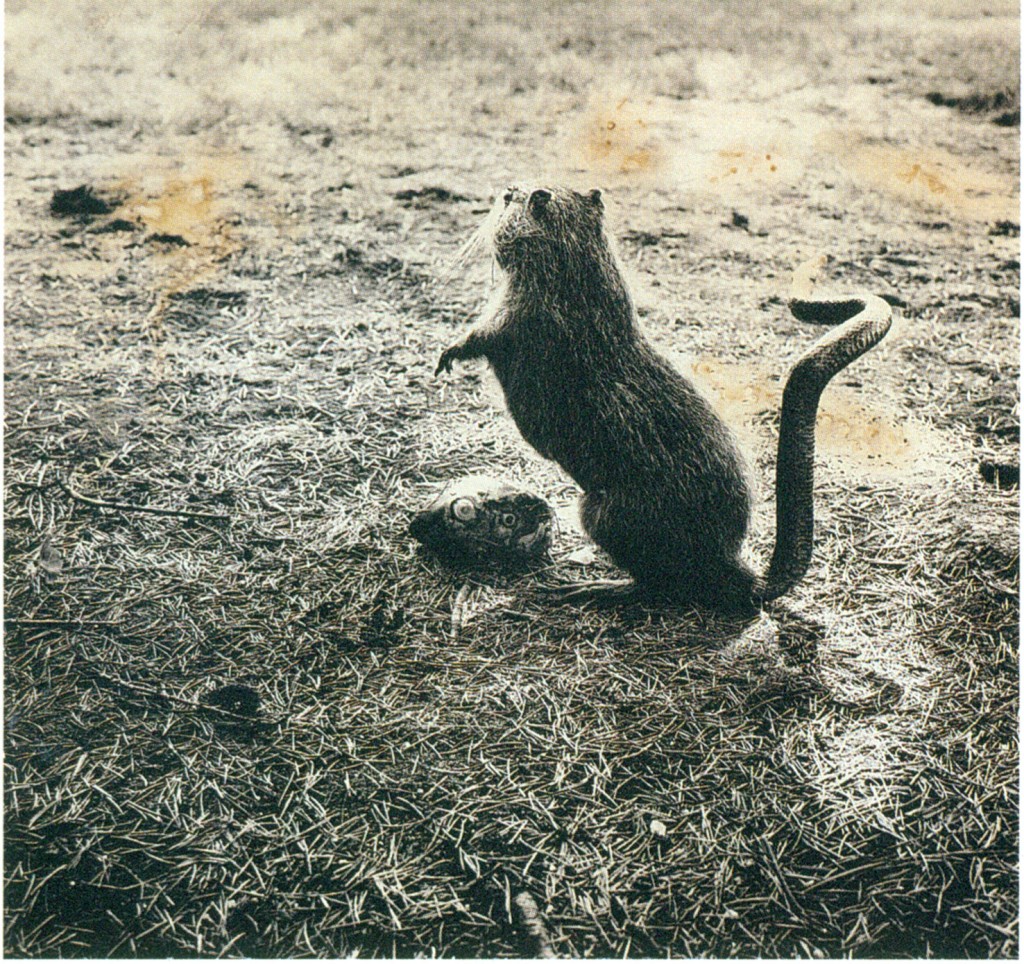Fauna, 1987
Also known as "Dr. Ameisenhaufen's Fauna" or "Secret Fauna", Fontcuberta created this series in collaboration with the writer and photographer Pere Formiguera. The premise was that Fontcuberta and Formiguera discovered the long-lost archives of German zoologist Dr. Peter Ameisenhaufen, who was born in 1895 and who disappeared mysteriously in 1955. Ameisenhaufen had catalogued a number of unusual animals; for example, Ceropithecus icarocornu resembles a monkey with a unicorn-like horn on its head and wings; and Solenoglypha polipodida resembles a snake with 12 feet.
A review of the exhibition as presented in 1988 at the Museum of Modern Art noted that the evidence presented for the existence of the animals included "photographs... both in their natural habitats and in laboratory situations; detailed field notes, both in the original German and English translations; an occasional skeletal X-ray or dissection drawing; two or three tapes of the animals' cries, and in one case, an actual stuffed specimen.” Furthermore, a video displayed interviews in which various people discussed Ameisenhaufen's life.
The exhibition was shown in England, Spain, Denmark, Germany, Japan, Canada and the United States. The fake animals displayed at the exhibitions varied according to the "legends, traditions, and superstitions" of the place hosting the exhibition. Among other clues suggesting that the exhibition was a hoax, "Formiguera" and "Ameisenhaufen" both mean "anthill," and the name of "Hans von Kubert" (Ameisenhaufen's research assistant) sounds like "Joan Fontcuberta."
Fontcuberta reported that responses to the exhibition ranged "from people who understand that it is a farce and appreciate the satire and the humor of it, to people who understand it's a farce and are angry at you for trying to fool them, to people who believe it and are angry, to people who believe it and are delighted." He said in another interview that during the 1989 exhibition in the Barcelona Museum of Natural Science, "30% of the visitors aged 20 to 30, with university training, believed that some of our animals could have existed."










